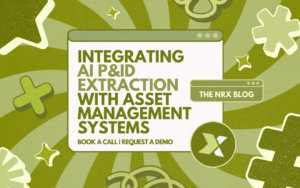According to McKinsey, automation can reduce manual data processing time by up to 45% during technology migration projects. This efficiency is particularly valuable when transitioning data to modern CMMS or EAM platforms. With thousands of asset records, maintenance histories, and vendor details involved, manual data migration can be time-consuming and prone to errors.

Defining Automation in Data Migration
Automation refers to the use of software tools and scripts to perform repetitive data migration tasks without constant human intervention. In the context of CMMS and EAM migration, automation tools help extract and transform large datasets more quickly and accurately than manual processes. This approach minimizes human error and ensures data integrity, which is critical for organizations relying on accurate maintenance information to manage assets effectively.
Enhancing Compliance and Standardization
Automation supports better compliance with industry regulations. Many sectors, including energy and pharmaceuticals, must maintain precise maintenance records for audits. Automated migration processes apply standardized rules to every data set, ensuring information is formatted consistently and reducing the risk of non-compliance penalties.

Accelerating the Migration Timeline
Speed is another major advantage of automation. Migrating millions of data points manually can take weeks or months, which delays go-live timelines. PwC reported that organizations using automation for ERP and CMMS transitions reduced project duration by an average of 30%. Faster migration enables teams to adopt their new systems more quickly and begin benefiting from improved asset management processes sooner.
Combining Automation with Strong Data Governance
While automation offers significant advantages, it works best in combination with strong data planning and validation practices. Pre-migration data profiling ensures that errors are not simply transferred faster. Automated tools should be configured to flag anomalies, such as incomplete work order histories or mismatched asset hierarchies, for review by subject matter experts before final transfer.
Conclusion
Automation transforms CMMS and EAM data migration from a tedious task into a streamlined process. Businesses that leverage automation tools combined with proper validation protocols can significantly cut costs, reduce errors, and accelerate digital transformation within their maintenance operations.
Integrating AI P&ID Extraction with Asset Management Systems
ISO 14224 vs Other Maintenance Standards: What Sets It Apart?
Building Trust in Your Asset Data: Strategies for Governance
Share this article




